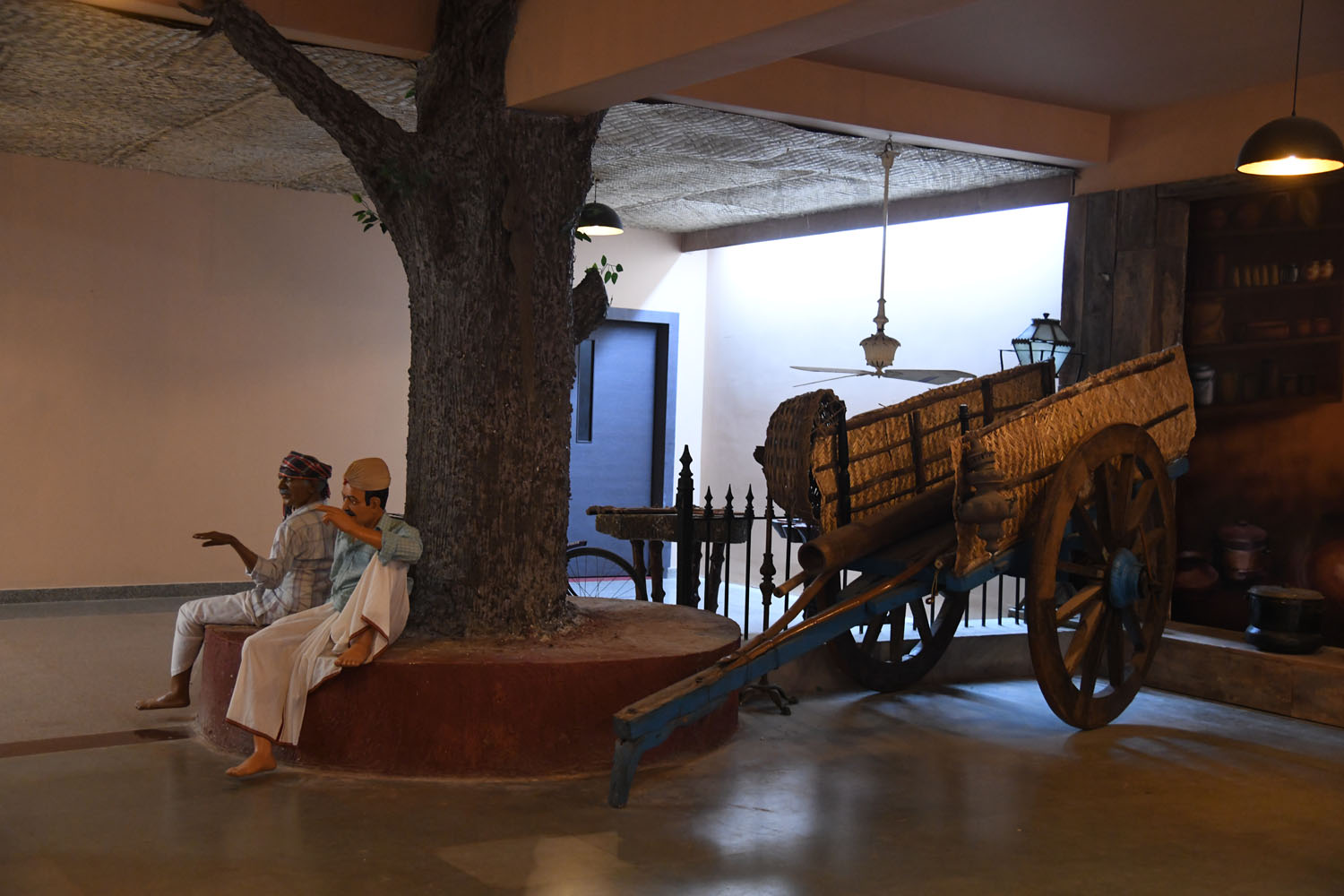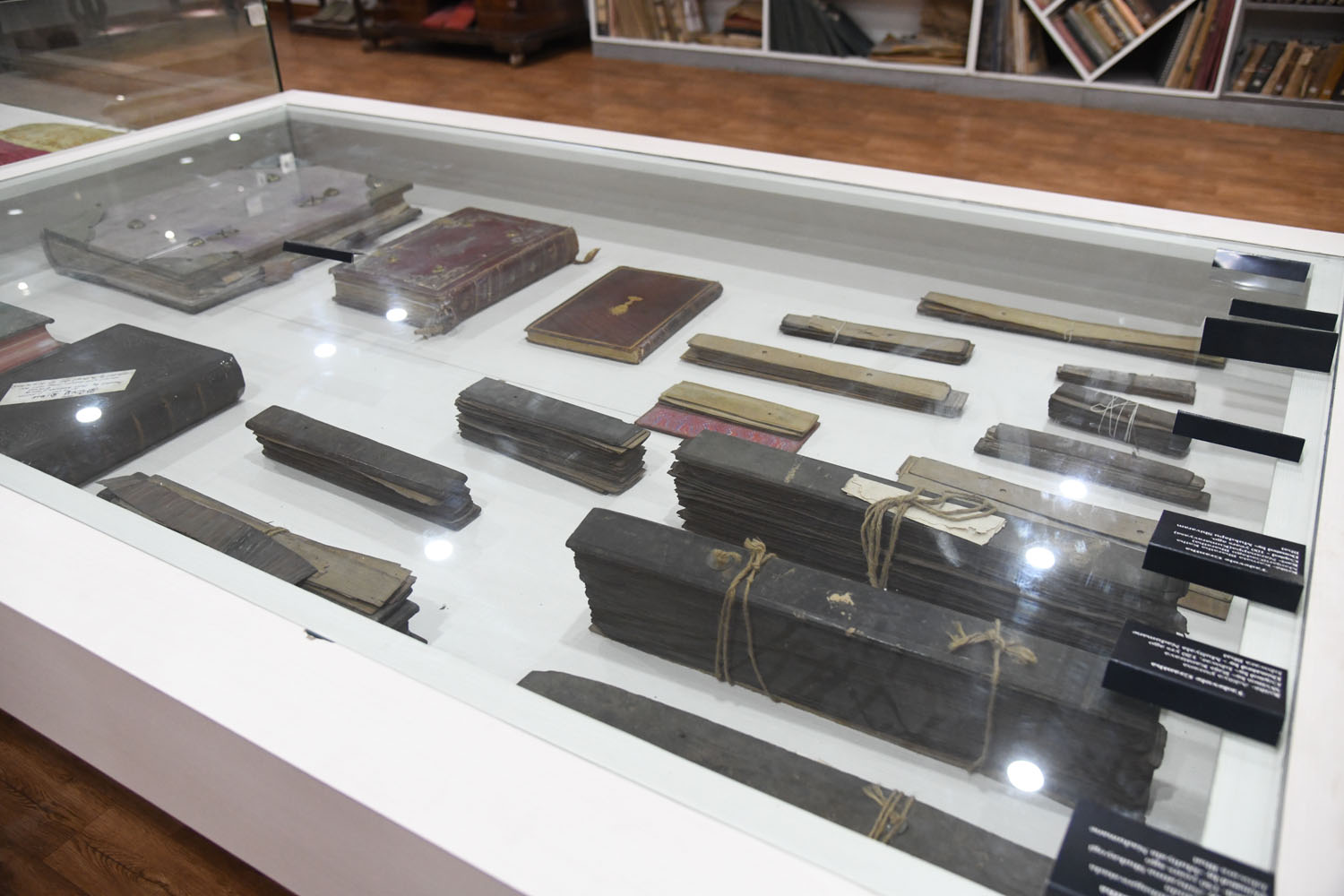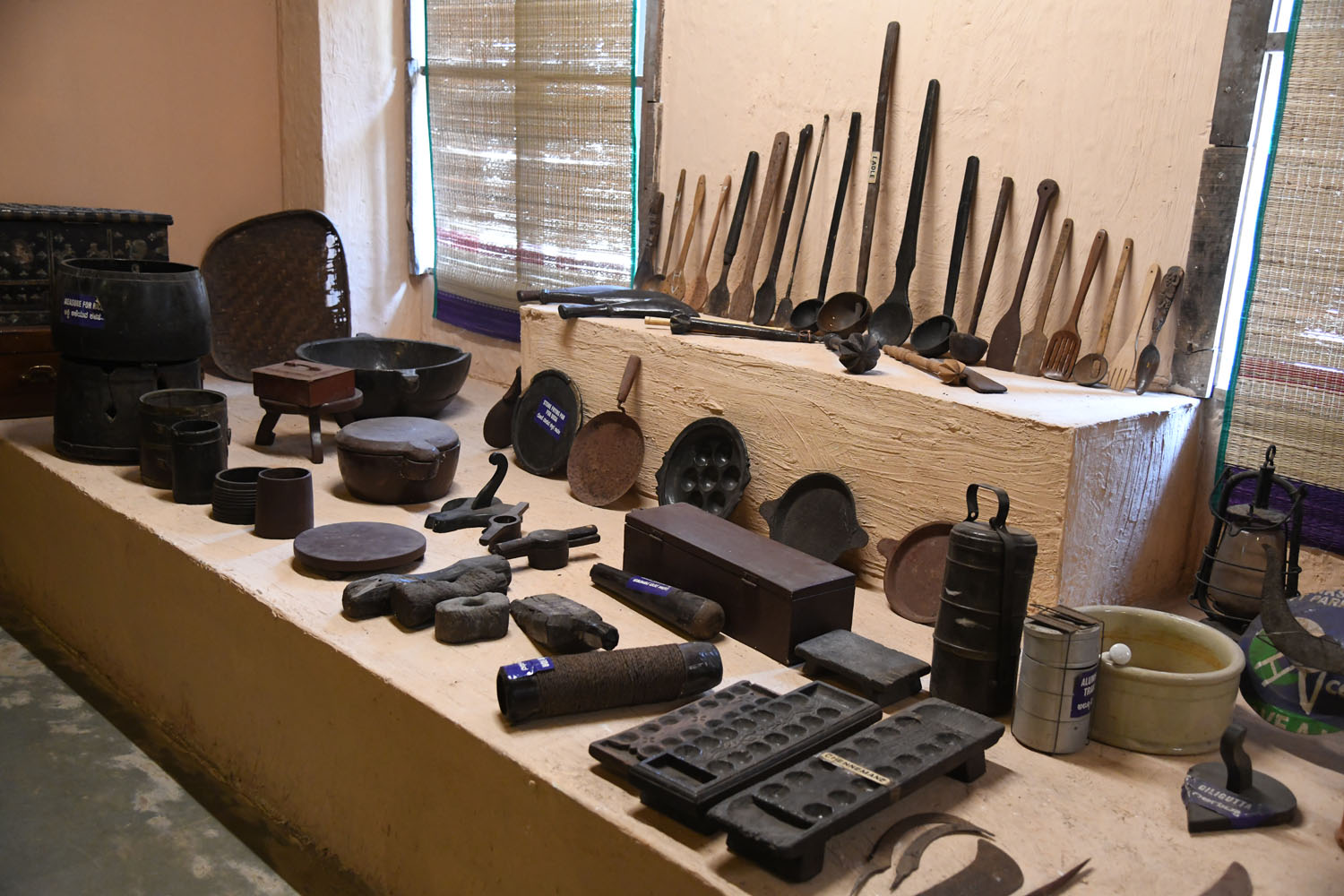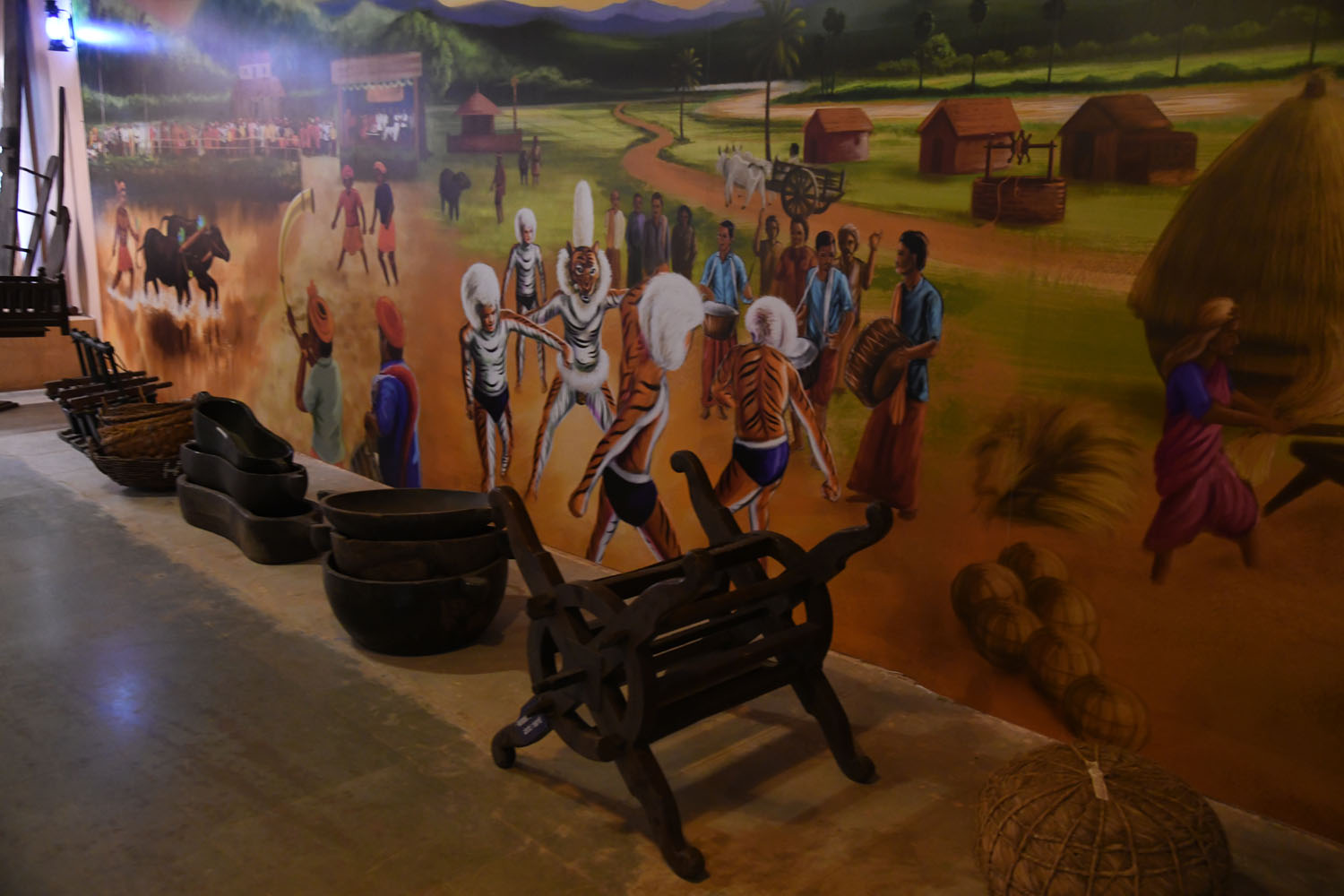The St Aloysius College Museum "Aloyseum" was started in 1913 by the Italian Jesuit Fr Chiapi with minerals, herbarium and a collection of Roman coins, a gift of the Collegio Vieta, Italy. It has now been shifted from the ‘Red Building’ to its present location close to the Chapel which gives easy access to visitors especially those coming to see the chapel paintings.

The new space has been designed by Mr William James who is an interior designer and the display of the exhibits has been planned and executed by Ms Kavitha who has a Masters in Archaeology and a Diploma in Museology


The renovated “Aloyseum” was inaugurated by Mrs Silvana Rizzi, from Milan, Italy, the great grandniece of Antonio Moscheni the painter of the chapel and blessed by Rev Dr Francis Serrao SJ, Bishop of Shimoga.
The present museum has a main hall with five side halls. The main hall has eight large showcases. The first one displays curios from around the world like a Neolithic stone axe, pieces of the Berlin wall, articles from the Holy Land, a piece of rock from the arctic etc. The other smaller show cases have brass and bronze items, a collection of lamps, of African artefacts, antique porcelain vases and dishes, shells and a large collection of cameras from the simple ones of the early times to modern electronic ones. Smaller showcases have some mineral specimens and fossils, rare stamps and currency notes of various countries.





Interesting articles like the first generator which was installed in the college long before electric supply was introduced in Mangaluru, the first computer of the College, old laboratory equipment are also housed in the main hall together with a large number of radios, gramophones and television sets.




Along the wall on the left side are religious statues, a collection of photos of yesteryears dating back to 1902 as well as a photo of the celebration of the first Independence Day at St Aloysius College. There is also a collection of old maps, newspapers and manuscripts.


The first side hall has a collection of skeletons including that of a whale which was got from Beliapatam near Calicut. The second side hall has the first car to come to Mangaluru”. In the early days travel was by carriages or on horseback. The horses were tethered to granite posts at the entrance of the High school building. One of these is seen in this section.


Rare books and manuscripts including several palm leaf manuscripts, missals as well as vestments used at mass, a Hebrew scroll and other items needing to be kept in air conditioned environment are housed in the third hall. A collection of frogs made by Dr Hareesh Joshi including the Euphlictis aloysii, named after the College, some old herbarium sheets are also in this hall as well as musical instruments.

There is a large collection of items of local culture. of domestic and agricultural utensils used in this area in early years in the fourth hall. These are displayed in a way that the visitors get an idea of their use in former times. The fifth hall is an audiovisual room to display videos on the various items of the museum.



Along the exit passage on the right side is a weaponry section with cannons from Tippu Sultan’s time, spears and arrows from Abyssinia and a few paintings. On the left side are Grandfather's Clocks, statues from Goa, instruments of Harry's Band and Storage bins. Selected items of antique furniture used in the College, including a desk from 1880 with scribbling and etching done by generations of students on it, are also displayed in this area.

All items are labelled in English and Kannada and it is proposed to have a portable audio-visual guides with longer explanations of the artefacts. Our vision is to make the museum a user friendly source of information and enjoyment for visitors through proper presentation of a variety of local and international items of edutainment which the college has collected over 130 years.
The Museum is open on all days.
9 a.m. - 5 p.m.
(Lunch Break: 1 p.m. - 2 p.m.)
For more queries contact through email: [email protected]
